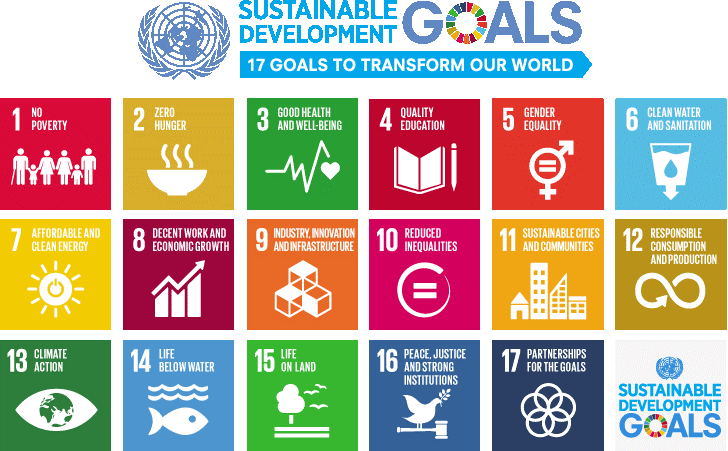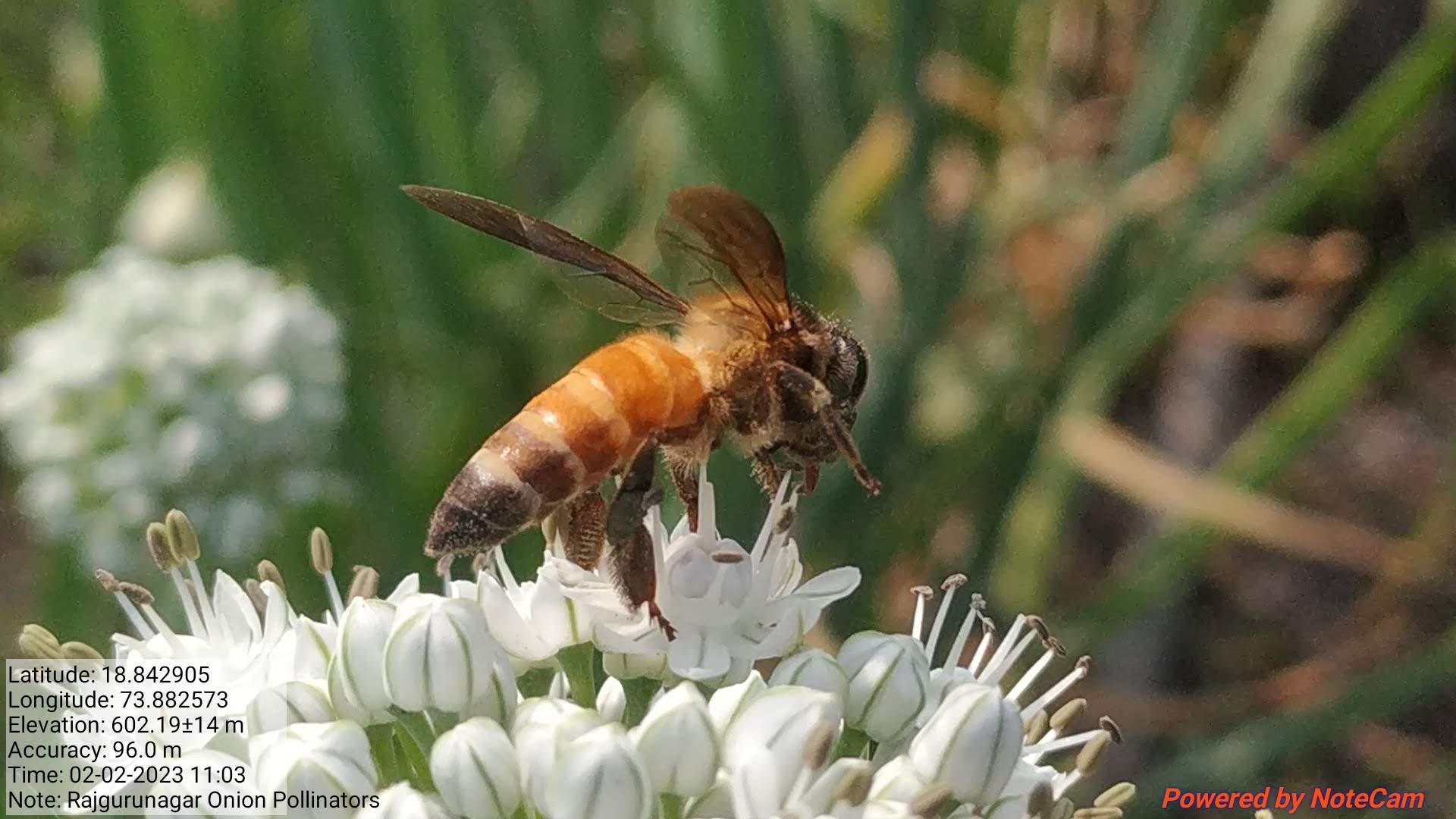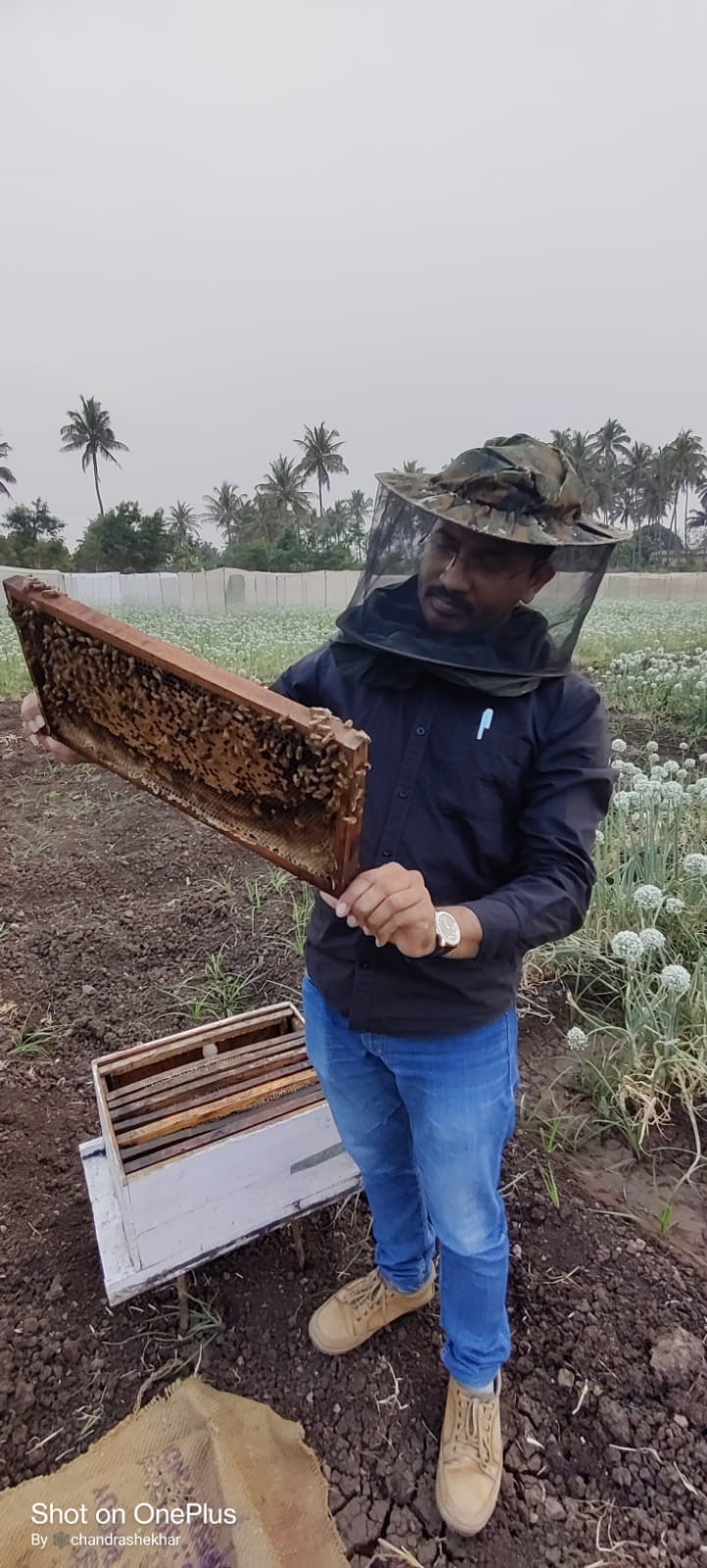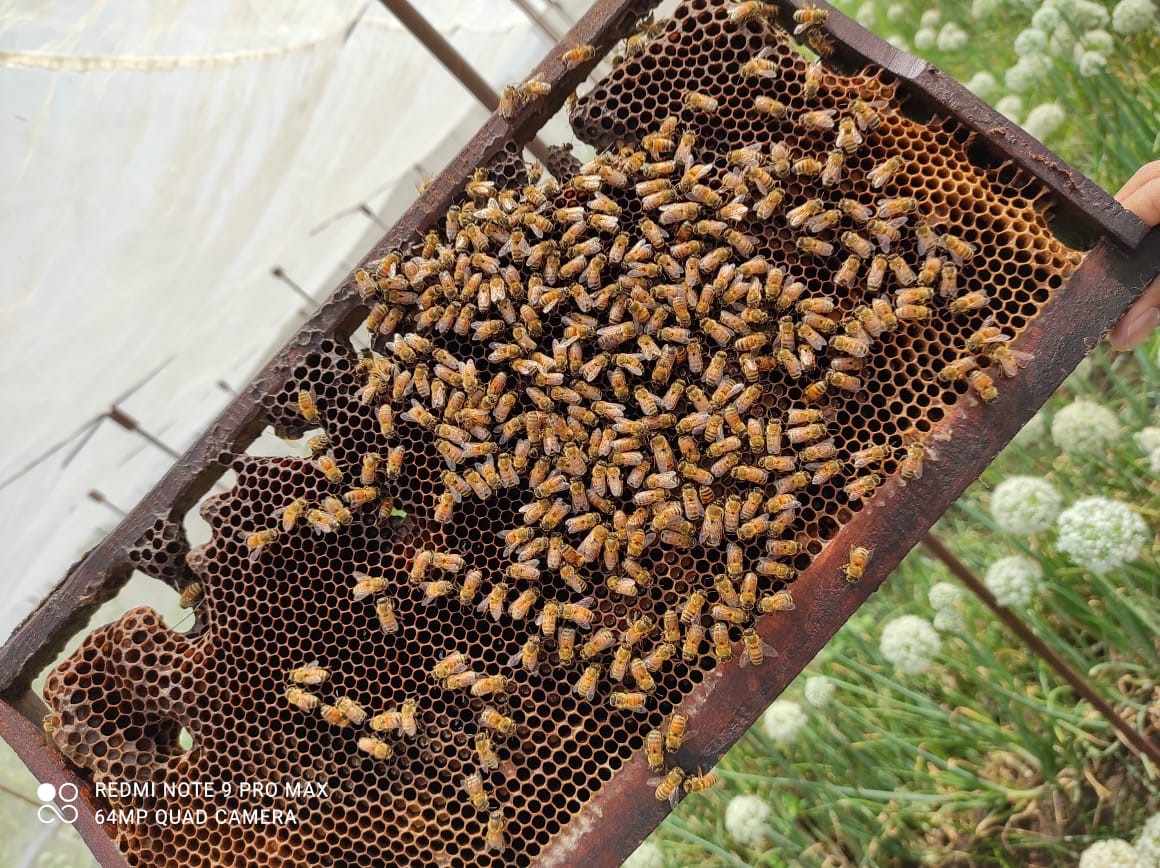Beekeeping for the Achievement of the Sustainable Development Goals
Dhananjay V. Shirsat1 and Soumia P.S.2
June 23rd 2025, 3:43:10 am | 5 min read

Introduction
Sustainable Development Goals (SDGs), also known as the Global Goals, are a set of 17 interconnected goals adopted by the United Nations in 2015 as part of the 2030 Agenda for Sustainable Development. The SDGs aim to address the most urgent social, economic, and environmental issues confronting the world while also ensuring that no one is left behind in pursuing sustainable development. Each nation is in charge of carrying out the SDGs within its own framework and in accordance with its own national development priorities. In order to accomplish the SDGs, governments, civil society, commercial sector, and individuals must work collaboratively and form partnerships (UN-SDGs 2015; Anderson et al. 2022).

Beekeeping is the practice of rearing and caring for honeybees for the purpose of harvesting their honey, beeswax, and other bee products. Around the world, beekeeping has been a significant agricultural activity for thousands of years (Patel et al. 2019). In addition to producing honey and other bee products, beekeeping has several other benefits:
1. Pollination: Bees are important pollinators for many crops and wildflowers, which contributes to food security and ecosystem health.
2. Biodiversity: Beekeeping can help support the conservation of bee populations and other pollinators, which are essential for maintaining biodiversity.
3. Rural livelihoods: Beekeeping can provide income and livelihood opportunities for rural communities, especially in developing countries.
4. Sustainable agriculture: Beekeeping can be practiced in an environmentally sustainable way, without the use of synthetic chemicals or other harmful practices.
Bees provide a variety of ecosystem services that support human well-being while preserving the planet's life support systems (Gill et al. 2016; Matias et al. 2017). Ecosystem services through bees also fundamentally aid in achieving several global sustainable development goals (SDGs) (Koffler et al. 2019; Thakur et al. 2019). The extent to which bees contribute to accomplishing the SDGs has not been thoroughly explored. However, bee pollination has been identified as directly contributing to food security (SDG2) and biodiversity (SDG15) (Dangles and Casas 2019). Nevertheless, bees could also contribute to a broader range of SDGs.

Beekeeping can provide a source of income for people living in poverty, particularly in rural areas where agriculture is the main source of income. By selling honey and other bee products, beekeepers can generate income and improve their economic well-being. Beekeeping can generate income through the sale of honey, beeswax, pollen, propolis, and other hive products. Beekeeping can also provide a sustainable source of income for marginalized groups such as women, youth, and people living in poverty. Beekeeping can be practiced with minimal resources and infrastructure, making it accessible to people with limited resources. Beekeeping can also create job opportunities in areas such as honey processing, hive construction, and equipment manufacturing.

Bees are essential for pollinating crops, and beekeeping can help increase crop yields and food security. This can result in improved food security for communities, particularly in areas where pollination is limited due to the decline of wild pollinators. Beekeeping can also provide a source of nutrition and food security for individuals and communities. Honey and other hive products are rich in vitamins, minerals, and antioxidants and can supplement diets.

Beekeeping can provide opportunities for women through economic and social empowerment. Women are often involved in beekeeping and can gain new skills and knowledge in beekeeping, such as hive management, honey processing, and marketing. Beekeeping can provide a sustainable source of income for women, which can increase their economic independence and decision-making power. In addition, beekeeping can promote gender equality by creating new opportunities for women to participate in agricultural activities. Women can become beekeepers, honey processors, and entrepreneurs in the honey and beekeeping industry. This can help break down gender stereotypes and promote women's participation in traditionally male-dominated fields.

Beekeeping promotes responsible consumption by providing a source of natural, healthy food products that are free from harmful chemicals and additives. People can reduce their reliance on processed foods and support sustainable food systems by consuming honey and other bee-related products. Beekeeping contributes to waste reduction by utilizing beeswax, a natural byproduct of honey production, in the manufacture of various products such as candles, cosmetics, and pharmaceuticals. This reduces the need for synthetic materials and promotes a circular economy. Beekeeping is a sustainable form of agriculture that promotes biodiversity and ecosystem services. By adopting sustainable beekeeping practices such as organic farming, minimal use of chemicals, and integrated pest management, beekeepers can produce honey and other products while preserving the environment and promoting sustainable production.

Bees and other pollinators play an important role in maintaining biodiversity and ecosystem services, which are critical for climate change adaptation and mitigation. Bees are important pollinators that help to ensure food security and promote biodiversity. By maintaining healthy bee populations, beekeeping can help to support ecosystems and ensure that plants are able to reproduce and thrive, even in the face of climate change. By supporting beekeeping practices, we can promote the growth of plants that sequester carbon and reduce the amount of greenhouse gases in the atmosphere. Beekeeping can promote sustainable land use practices by providing an alternative source of income for farmers and encouraging the preservation of natural habitats. By promoting sustainable land use practices, beekeeping can help to reduce deforestation and promote the restoration of degraded ecosystems

Beekeeping can contribute to the conservation of bees and other pollinators, which are essential for the health of ecosystems and the maintenance of biodiversity. Beekeeping promotes habitat preservation by encouraging the maintenance of natural habitats that support bee populations. By protecting these habitats, we can also protect other species that rely on them, and help to ensure the long-term sustainability of ecosystems. By supporting healthy bee populations, beekeeping can help to promote the growth and reproduction of a wide range of plant species, which in turn supports diverse ecosystems.
Beekeeping in India:
Beekeeping has been practiced in India for thousands of years and is an important agricultural activity in many parts of the country. India is the world's sixth-largest producer of honey, and the industry provides employment to millions of people, particularly in rural areas. Beekeeping in India is mostly done with the indigenous honeybee species Apis cerana, Apis dorsata, and Apis florea which are well adapted to the country's climatic conditions. However, in recent years, the use of the European honeybee, Apis mellifera, has also increased.

Honeybee Species and their Suitability for Beekeeping:
Apis cerana indica: Also known as the Indian honeybee, it is the most commonly used species for beekeeping in India. These bees are well adapted to the local climate and are relatively easy to manage.

Apis mellifera: Also known as the European honeybee, this species is not native to India but has been introduced for commercial beekeeping. They are known for producing high-quality honey and are preferred by many beekeepers.
Apis dorsata: Also known as the giant honeybee or rock bee, these bees are native to India and are known for their large size and strong honey production. However, they can be more aggressive than other honeybee species and require more specialized management.
Apis florea: Also known as the dwarf honeybee, these bees are the smallest of the honeybee species and are commonly found in India. They are known for their efficient honey production but are difficult to manage due to their small size.

The honeybee species Apis dorsata and Apis florea tend to live in open conditions and build a single comb, making them unsuitable for rearing in boxes. On the other hand, the Indian honey bee, Apis cerana indica, and the European bee, Apis mellifera, prefer to live in darker areas and construct multiple combs, which make them more suitable for being raised in boxes. Most of India's honey production comes from managed hives of the Indian honey bee (Apis cerana indica) and the European honey bee (Apis mellifera). Apis dorsata, also known as the giant honey bee, is a wild species of honey bee found in India and other parts of Asia. This species is not typically kept in managed hives for honey production, however using scientific methods of honey hunting a large amount of the honey is harvested from these bees.
The choice of honeybee species depends on various factors such as the availability of beekeeping equipment, local climate, and the beekeeper's expertise. It is important to choose a species that is well-adapted to the local environment and can produce high-quality honey.
Honey Mission
The Honey Mission in India is a government initiative aimed at promoting and developing the honey industry in the country. The mission was launched by the Ministry of Agriculture and Farmers Welfare in 2017 with the goal of increasing honey production, improving the quality of honey, and enhancing the income of beekeepers.

The mission has several objectives, including:
i. Increasing the number of bee colonies in the country
ii. Improving the quality of honey by promoting good beekeeping practices and providing training to beekeepers
iii. Developing infrastructure for honey production, including processing and packaging facilities
iv. Promoting the marketing and export of honey and other bee products
v. Encouraging scientific research and development in the field of beekeeping
The Honey Mission has been successful in promoting beekeeping as a profitable and sustainable livelihood option for farmers, particularly in rural areas. It has also helped in enhancing the biodiversity of plants and crops through pollination by bees, leading to better yields and improved quality of agricultural produce.

Conclusion:
Given that one-third of worldwide agricultural production is dependent on pollination, particularly that of honey bees. Despite their value to humans, honey bees perish at an alarming rate thereby jeopardizing global food security. Einstein's theory, that once the bees die, humanity has just four years to extinction, appears to be more accurate than ever. Hence, beekeeping and wild bee conservation are urgently needed. Beekeeping can contribute to achieving several SDGs, particularly those related to poverty reduction, food security, sustainable agriculture, gender equality, climate action, and the conservation of biodiversity. Promoting beekeeping will help the country to achieve its global goals before 2030.
Acknowledgment: The authors express their gratitude to the DST-Science and Engineering Research Board for their financial support.
References:
Anderson, C.C., Denich, M., Warchold, A., Kropp, J.P. and Pradhan, P., 2022. A systems model of SDG target influence on the 2030 Agenda for Sustainable Development. Sustainability science, 17(4), pp.1459-1472.
Dangles, O., & Casas, J., 2019. Ecosystem services provided by insects for achieving sustainable development goals. Ecosystem services, 35, 109-115.
Gill, R.J., Baldock, K.C.R., Brown, M.J.F., Cresswell, J.E., Dicks, L.V., Fountain, M.T., Garratt, M.P.D., Gough, L.A. et al., 2016. Protecting an ecosystem service: Approaches to understanding and mitigating threats to wild insect pollinators. In Ecosystem services: From biodiversity to society, Part 2, vol. 54, ed. G. Woodward and D.A. Bohan, Academic Press London: Advances in Ecological Research, pp. 135–206.
Koffler, S., Barbiéri, C., Ghilardi-Lopes, N.P., Leocadio, J.N., Albertini, B., Francoy, T.M. and Saraiva, A.M., 2021. A buzz for sustainability and conservation: the growing potential of citizen science studies on bees. Sustainability, 13(2), p.959.
Matias, D. M. S., Leventon, J., Rau, A. L., Borgemeister, C., and von Wehrden, H., 2017. A review of ecosystem service benefits from wild bees across social contexts. Ambio, 46(4), 456-467.
Patel, V., Pauli, N., Biggs, E., Barbour, L. and Boruff, B., 2021. Why bees are critical for achieving sustainable development. Ambio, 50, pp.49-59.
Thakur, R.K., Manzoor, U. and Bhadauriya, A.S., 2019. Apiculture for Sustainable Rural Development. RASSA Journal of Science for Society, 1(1and2), pp.46-48.
United Nation’s Sustainable Development Goals, https://sdgs.un.org/goals (Accessed on 19th April 2023).